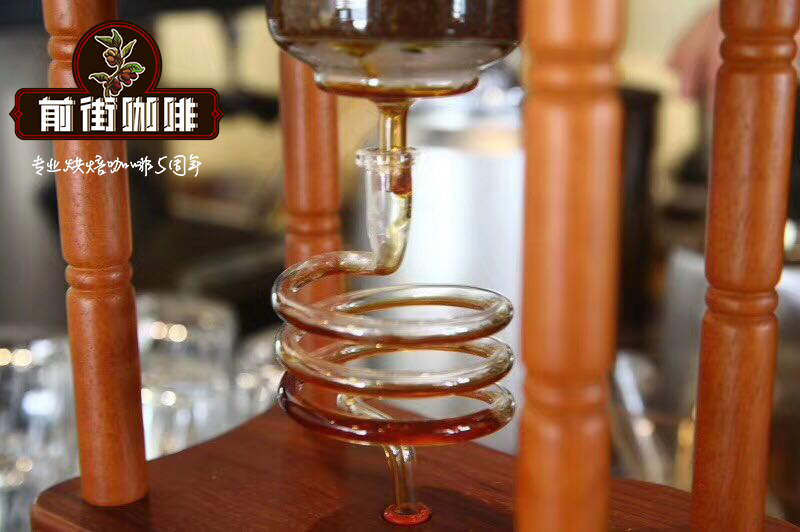What are the requirements of the planting environment for the growth of coffee trees? How long does it take to bear fruit?

Professional coffee knowledge exchange more coffee bean information please follow the coffee workshop (Wechat official account cafe_style)
What are the requirements of the planting environment for the growth of coffee trees? How long does it take to bear fruit?
Although the coffee tree is called a tree, it is actually an evergreen shrub. If it is not trimmed, it can be as high as 3-9 meters. There is a glossy dark green at the top of the leaf and a dull light green at the bottom. The leaves are 7.5 to 15 centimeters long and are opposite. Many small white flowers can be seen when blooming, so the appearance of the coffee tree is snow white. Fragrant flowers wither a few days after they bloom. Planting
And small berries begin to develop. The color ranges from dark green to crimson at maturity, and the fruit does not mature until about 6-7 months after flowering. Under the skin of the fruit, there is fleshy pulp, which is covered with a sheepskin-like skin (parchment skin), which is usually wrapped in two green coffee beans. Outside the beans is a fragile, close and almost transparent silver film (silver skin).
Coffee trees usually blossom once a year, but they may blossom more than once in rainy climates, as is the case with coffee in Taiwan. Flowers, green berries and ripe berries can often be seen on a tree at the same time. Coffee trees can usually be harvested within five years of planting, and can reach a good yield within eight years. Generally, a considerable yield can be maintained within 15-20 years, and can be extended for longer if the soil is good and fertile. Each bean produces an average of 0.5 to 0.7 kilograms of coffee beans per year, but it usually exceeds this number. Coffee trees generally need a stable environment, it can not resist frost, nor can it tolerate fairly high temperatures for a long time. Moreover, in areas with heavy rainfall, the varieties cultivated in alpine areas ranging from 1000 meters to 3,000 meters above sea level are the best. Therefore, the tropical region and the temperate zone where coffee is suitable for cultivation in terms of climate and soil, that is, from about 28 degrees north latitude to 30 degrees south latitude, we call it the coffee zone (coffee zone). The following is a brief introduction to the natural conditions and planting procedures of coffee.
One of the characteristics of a coffee tree is that its fruit can bear fruit several times a year, and another is that flowers and fruits (also known as cherries) coexist at different stages of ripening. The style of the whole coffee industry is influenced by the fickle nature. If the fruit is too ripe, the beans in it will rot. If it is not ripe enough, the beans picked will not ripen by themselves. So bean pickers often go back to the same tree several times to look for ripe fruit-trying to get only 2 pounds of green coffee beans, usually an average of 2 pounds a year. Keep this in mind the next time you buy coffee.
The growth temperature of species is also different. For example, the optimum temperature for Arabica coffee is 18 ~ 22 ℃, and that for Romsta coffee is 22 ~ 27 ℃. Brazil has the highest coffee production in the world, and the annual average temperature of its cultivated land is 19 ~ 20 ℃. If the winter temperature is too low, the cultivation of coffee is difficult, or even die, because the low temperature often harms the development of young plants, and the harvest decreases, Arabica coffee is damaged if it is kept at a low temperature of 5 ℃ for several days, while extremely high temperatures lead to luxuriant branches and leaves and a decline in coffee quality. Therefore, in tropical high-temperature places, coffee is not planted in the lower Mid-levels (hillside), but not over the frost line (the lowest temperature is 0 ℃ line). Generally speaking, Arabica coffee grows between 600m above sea level and frost line, that is, between 600m and 2000 m. Romsta Coffee and Liberica Coffee are suitable for growing below 600 meters above sea level.
Important Notice :
前街咖啡 FrontStreet Coffee has moved to new addredd:
FrontStreet Coffee Address: 315,Donghua East Road,GuangZhou
Tel:020 38364473
- Prev

What conditions do you need to grow coffee trees? How long will it blossom and bear fruit? What does the coffee tree look like?
Professional coffee knowledge exchange more coffee bean information Please pay attention to the coffee workshop (Wechat official account cafe_style) what are the conditions for coffee planting? How long will it blossom and bear fruit? Coffee is a perennial evergreen shrub or small tree of Rubiaceae. It is a horticultural perennial cash crop with the characteristics of fast growth, high yield, high value and wide market. Wild coffee trees can
- Next

What conditions do coffee trees need to meet to grow well? How to plant coffee trees?
Professional coffee knowledge exchange more coffee bean information please follow the coffee workshop (Wechat official account cafe_style) what conditions do coffee trees need to meet to grow well? How to plant coffee trees? The development of rainfall coffee needs sufficient moisture, the annual rainfall should be at least 1000 mm, and the maximum should not exceed 3000 mm. The rainfall should not be excessive or moderate, if the sauce is too much for a while.
Related
- Detailed explanation of Jadeite planting Land in Panamanian Jadeite Manor introduction to the grading system of Jadeite competitive bidding, Red bid, Green bid and Rose Summer
- Story of Coffee planting in Brenka region of Costa Rica Stonehenge Manor anaerobic heavy honey treatment of flavor mouth
- What's on the barrel of Blue Mountain Coffee beans?
- Can American coffee also pull flowers? How to use hot American style to pull out a good-looking pattern?
- Can you make a cold extract with coffee beans? What is the right proportion for cold-extracted coffee formula?
- Indonesian PWN Gold Mandrine Coffee Origin Features Flavor How to Chong? Mandolin coffee is American.
- A brief introduction to the flavor characteristics of Brazilian yellow bourbon coffee beans
- What is the effect of different water quality on the flavor of cold-extracted coffee? What kind of water is best for brewing coffee?
- Why do you think of Rose Summer whenever you mention Panamanian coffee?
- Introduction to the characteristics of authentic blue mountain coffee bean producing areas? What is the CIB Coffee Authority in Jamaica?

